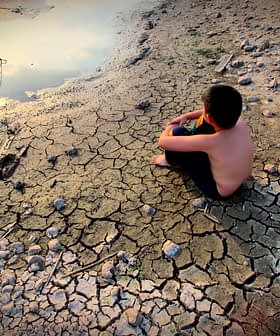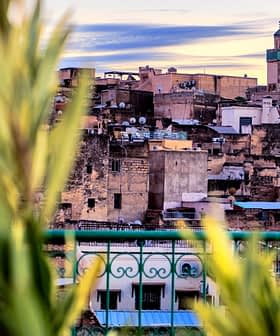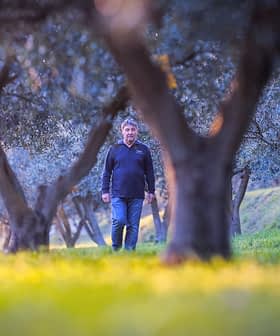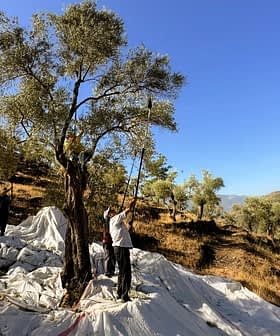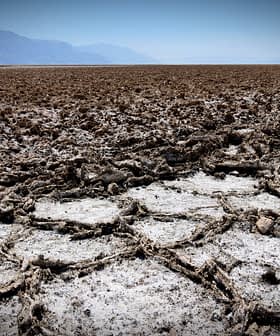Morocco's Olive Harvest Expected to Rebound, Despite Headwinds
Despite a hot and dry summer, recent rain has improved conditions, with more expected in the coming weeks. Officials expect production to improve compared to last year.
 Fez, Morocco
Fez, Morocco Despite facing challenges such as high temperatures, drought, and an earthquake, Moroccan officials are optimistic that the upcoming olive harvest will surpass last year’s yield, with the final outcome dependent on rainfall in the next two months. While significant damage was done to olive groves during the flowering period due to extreme weather conditions, recent rain across the country’s prominent olive-growing regions is expected to help with oil accumulation, with officials emphasizing the need to invest in irrigation to increase production and improve Morocco’s international trade balance.
High temperatures, an enduring drought, and the historic earthquake have plagued Moroccan olive groves just months before the 2023/24 crop year is underway.
We expect production to be higher than it was last year, which was catastrophic.
Despite the sector’s significant headwinds, officials remain optimistic that this year’s harvest will still improve last year’s yield of 107,000 tons, significantly below the 200,000 tons produced in 2021/22 and 8 percent below the five-year average.
“We expect production to be higher than it was last year, which was catastrophic,” Rachid Benali, president of the Moroccan Interprofessional Olive Federation, told local media.
See Also:2023 Harvest UpdatesHowever, he added that the final yields largely depend on how much rain falls in the next two months.
According to Morocco’s agriculture ministry, the country received more rain in the 2022/23 hydrological year than in the previous one, 22 percent more, but total precipitation was still 32 percent below the norm.
Recently, rain has fallen across the north of the country, including in several prominent olive-growing regions, and more rain is expected in the coming weeks.
While rain will help with oil accumulation in the country’s 750,000 hectares of rainfed groves, Benali said significant damage was done during the flowering period in April.

Between 60 and 70 percent of the olive trees suffered from scorching springtime temperatures. “The olive flowers burned because of this climatic phenomenon, which is widespread,” he said.
The unusually hot spring was followed by a scorching summer and high winds, known as the Chergui, which caused further damage to some of the country’s olive trees.
This phenomenon was particularly acute in the central region of El Kelâa des Sraghna, with some local officials estimating that production could fall by 80 percent compared to last year due to extensive damage from what and wind.
In the eastern regions of Taza, Guercif and Outat El Haj, home to 186,000 hectares of olive groves, production is expected to continue upward despite some farmers reporting significant losses after hailstorms in early September.
However, in the Fez-Meknes region of northeastern Morocco, home to one-third of the country’s olive groves, agriculture official Mostapha Mrhari told local media that irrigated olive trees did not suffer significant damage.
In the mountainous region of Al Haouz, located at the epicenter of the 6.8 magnitude earthquake in September that killed about 3,000 people, farmers are still working to clear rubble and determine the extent of the damage.
The region has an estimated 124,200 hectares of olive groves, about 10 percent of the country’s total. According to local media reports, high-density groves located at the foothills of the High Atlas Mountains were largely unharmed.
Farther up in the mountains, traditional groves owned by small-scale producers were more extensively damaged.
“It was the mountain communities, living in traditional clay houses, who were most affected,” one producer told local media. “These communities practice subsistence agriculture based on arboriculture, such as fruits and olives, and the production of herbs, such as saffron, for self-consumption or in small quantities sold on the local market.”
Farther south in the Souss-Massa region, located just below the earthquake’s epicenter, production was also expected to rebound. While the area avoided the worst of the quake, tremors were still felt and caused damage to infrastructure. Minimal damage to olive trees was reported.
Off the back of the year-long drought, officials nationwide emphasize the need to invest in olive groves. In May, the government provided the Moroccan Interprofessional Olive Federation with 16.9 billion dirhams (€1.54 billion) to invest in irrigation.
According to officials, 37.5 percent of the country’s olive groves are irrigated, a total of 450,000 hectares. Still, these groves are responsible for between 50 and 60 percent of total production.
Irrigating the rest of the country’s groves would significantly increase production, which officials believe will improve Morocco’s international trade balance and lower persistently high domestic prices.
Share this article



